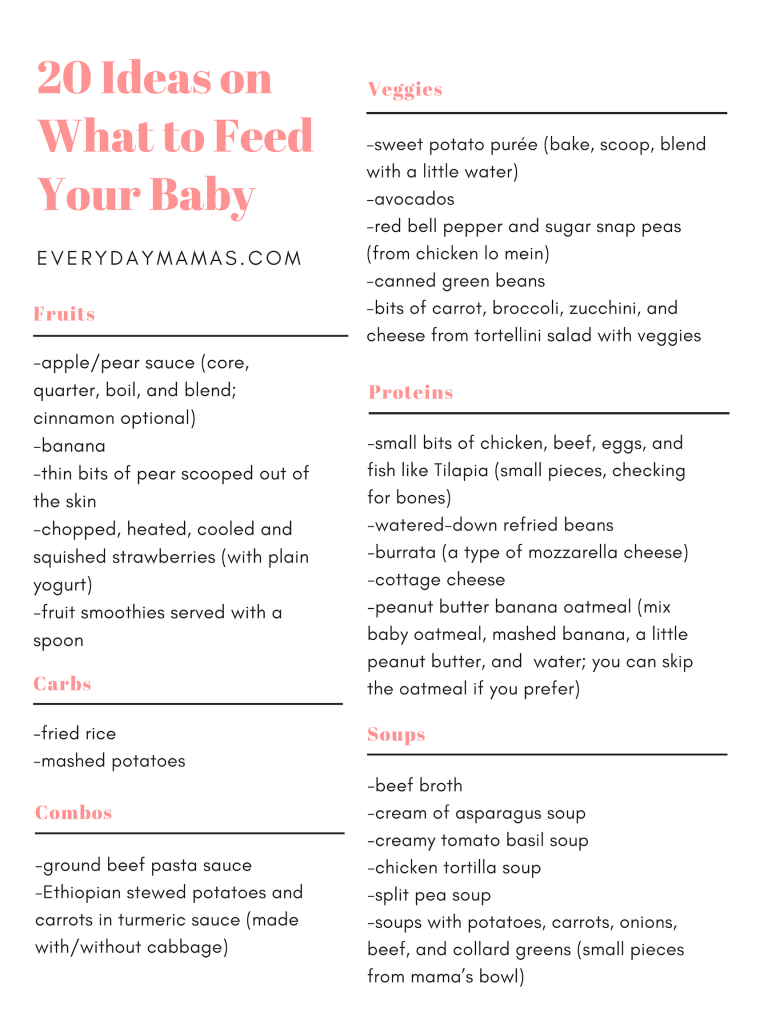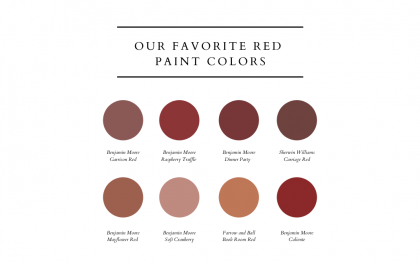
[I’m not a doctor, just a mama trying to do her best. If you have any questions about what to feed your baby, consult your pediatrician. These are simply my experiences.]
When my first child was a baby, we were so excited for her to start eating solid foods. We began when she was four months old, by dutifully introducing her to rice cereal, then oatmeal, veggies, and bananas, as we had been told to do.
I was new to everything about being a mama, and when it came to feeding my baby solid food, I felt somewhat anxious about doing it wrong and pretty clueless about what to do.
As first-time parents, we were particularly cautious about choking, and carefully avoided everything that could be an allergen (as we had been instructed) and watched closely for reactions to new food. But it felt like she was eating the same things over and over again, so I began turning to the premade baby food jars at the grocery store, looking to give her more “variety” in her diet.
As the months went on and she started to outgrow puréed food, I felt even more at a loss. She would eat a couple of vegetables sometimes, but mostly her toddler food consisted of fruit, pasta, crackers, cheese. We were in a rut.
I felt shocked and helpless when one pediatrician told me in a rather stern voice that they “didn’t encourage feeding crackers to toddlers.” I cried to my husband, “What, exactly, am I supposed to feed her?”
Looking back, I realize that I was making everything too complicated.
Thankfully, I stumbled across two books that started to change the way I thought about feeding my daughter.
Piho writes that Americans tend to believe in the concept of “kids’ foods.” Just look at the children’s menu in almost any restaurant, and you’ll see that most kids’ menus offer just these few things: pasta, pizza, chicken nuggets, hamburgers, and fruit.
As a culture, we’ve become convinced that these are the only foods our children will eat—and our convictions become a self-fulfilling prophecy.
Baby food and children’s food don’t have to be bland; for the most part, kids learn to love what they are regularly given to eat. But they have to experience the flavors in order to learn to love them.
Here are the main things I learned from Piho’s book:
- Babies can (and should!) be eating what the adults are eating (with a few exceptions), whether in puréed form or cut into small pieces.
- Don’t be afraid of flavor and spices.
- Early exposure to a variety of tastes makes so much difference in what your child will eat. So, eat a variety while pregnant and breastfeeding, and introduce a variety of flavors in their early eating months.
The book really helped me adjust the way I was thinking about feeding my baby. I had been focused on everything I couldn’t feed her, instead of everything I could. With time and practice, my confidence grew. With each new child, I found it easier to find good food for the baby and to try new things.
2. French Kids Eat Everything by Karen Le Billon
Le Billon wrote this book because she realized that, as a Canadian, her attitudes toward food were greatly different from those of her French in-laws, especially when it came to feeding her daughters. In this book, she shows how she gradually came to appreciate the French approach to teaching children to love good food.
“Good taste must be taught and learned, and can only be acquired over time.” – the French National Ministry of Education
The French consider training their children to love food as an essential art of their children’s education. While North Americans are frequently anxious about food, the French have a mostly joyful approach, and yet their children eat things many North American children would not. If a child rejects a specific food, the French tend to assume he just hasn’t tried it enough times to learn to like it and offer it again later.
I was reminded of this not long ago, when my baby daughter seemed to be rejecting avocados. She hadn’t rejected any other food so far, and all my other kids had liked avocados. But I had tried giving them to her several different ways (plain, mashed with bananas, and sautéed), and she still refused them.
Thinking about how many times it takes to learn to like something, and mashing up an avocado on toast in order to try out this new trend, I decided to hand the baby the spoon I had been using to mash the avocado. She was hungry, and she slurped all the avocado off of the spoon. From that day on she has loved avocados.
These two books put things in perspective for me, and I also began to hear advice that it was better to wait until about six months to start solid food. It was much easier once I started following this advice. Babies are usually able to sit up better in the high chair, more quickly adjust to swallowing food, and spit out less. And the American Academy of Pediatrics now poses that early exposure to allergens may actually help prevent allergies from developing.
Now I’m on my sixth baby, and what do I feed her? For her first few meals she had baby oatmeal. The next week or so, she had homemade purées. After that, I simply asked myself, “What am I eating? Can she have some of this or is there something else in the house that I can feed her?” She actually helped me finish off some leftovers.
I want to make sure she is eating a variety, especially lots of vegetables. Feeding her is also a good reminder to keep offering a variety to the rest of the family as well.
If you are looking for some new food ideas to try, here are a few we’ve been introducing to our seven month old:

For a good recipe on how to cook the Ethiopian Stew mentioned above, see this one.
Also, at the end of French Kids Eat Everything are a few recipes that are both baby (and family!) friendly. Here’s a few we really enjoy:
- Sophie’s Spinach Surprise (basically spinach and zucchini steamed and puréed)
- Cauliflower Casserole
- Quick No-Pastry Quiche
- Baby’s Vichyssoise (basically potato, leeks, and pear steamed and puréed)

Additional Resources:
Karen Le Billon’s website: https://karenlebillon.com/. She has recipes on the site (look under resources), and she has another book with ideas on taste training.
If you have older kids (talking as young as three-years-old) and want to teach them to cook, Katie Kimball of Kitchen Stewardship has a great course to help you do that: http://ref.kidscookrealfood.com/ref/ew21139850
She also has great articles on food. I found several articles on feeding the baby:
These bibs are so soft and flexible and yet easy to wash and easy to dry.
Love this toddler silverware—this set is our favorite.
For food storage, these silicone ice cube trays are perfect.
Had to include this stain remover because its the best. And it’ll be used a lot.
Jasie Desta
Related posts
Recent Posts
Flooring Renovation: Asbestos Removal and Choosing the Perfect Floor Stain
We finally completed the renovation of our first-floor flooring, and like most renovations, it was a bit more involved than we initially hoped for. When we bought the house three years ago, we knew the…
Roses are red: 8 beautiful shades of a paint color you might not realize you love
Lots of us love blues, greens, whites, and greys. And if neutrals are more your thing, you might think you need to stay far away from a color like red. But we think it’s worth…








